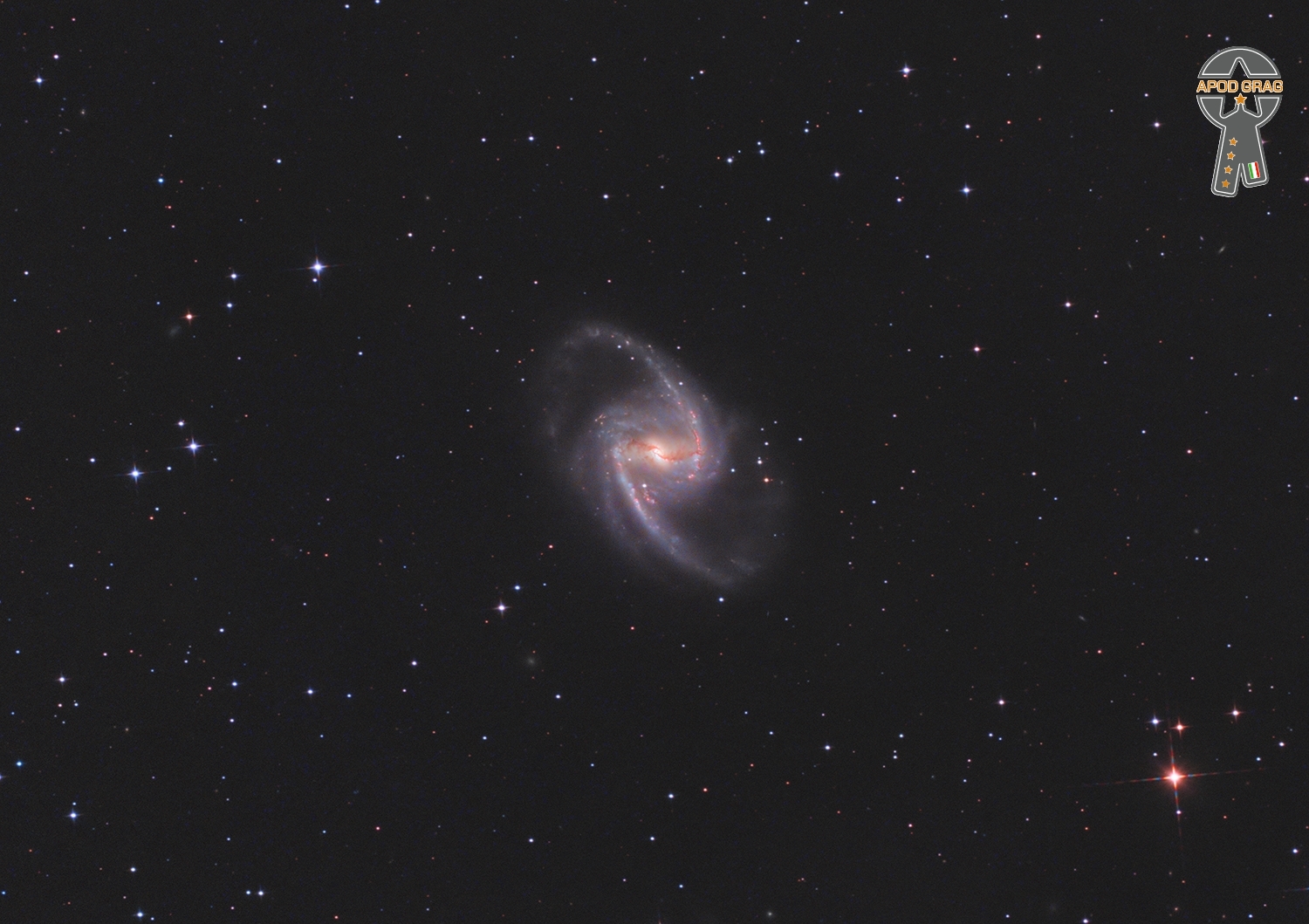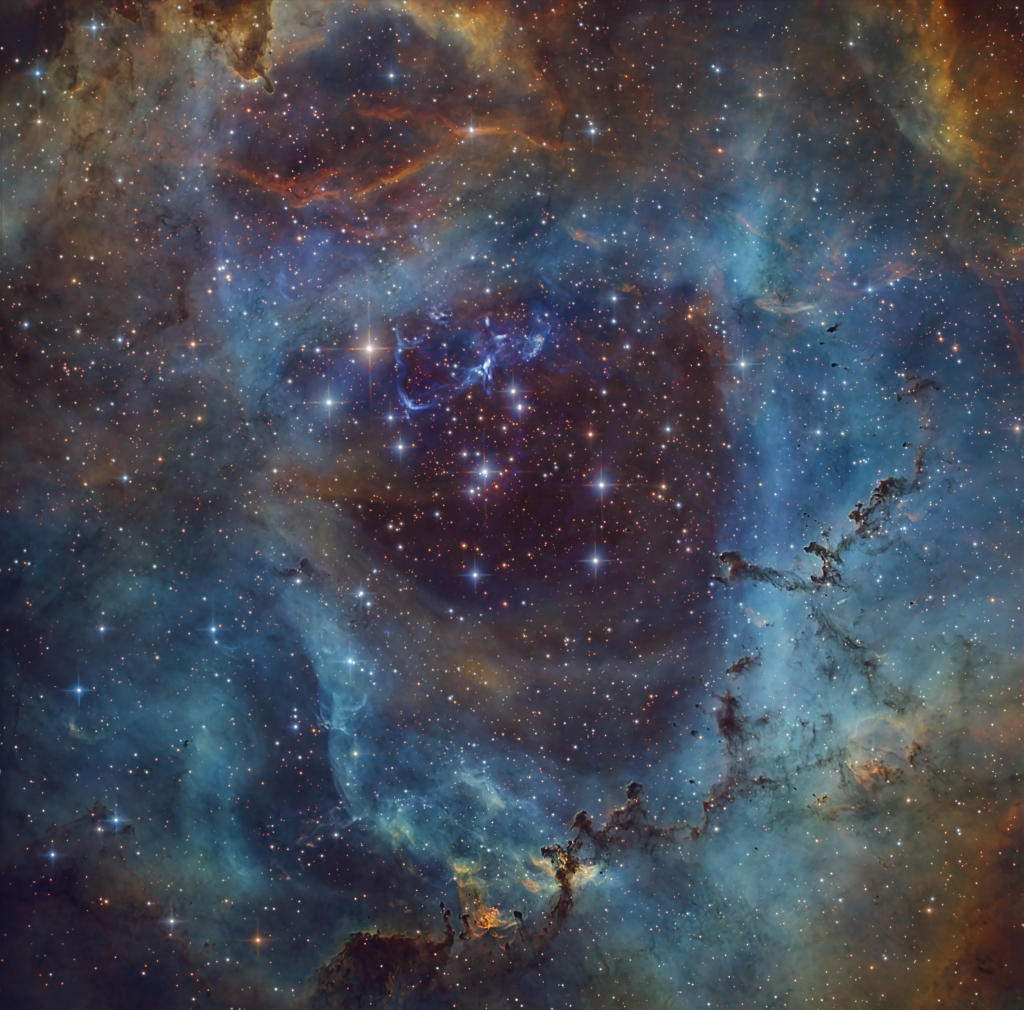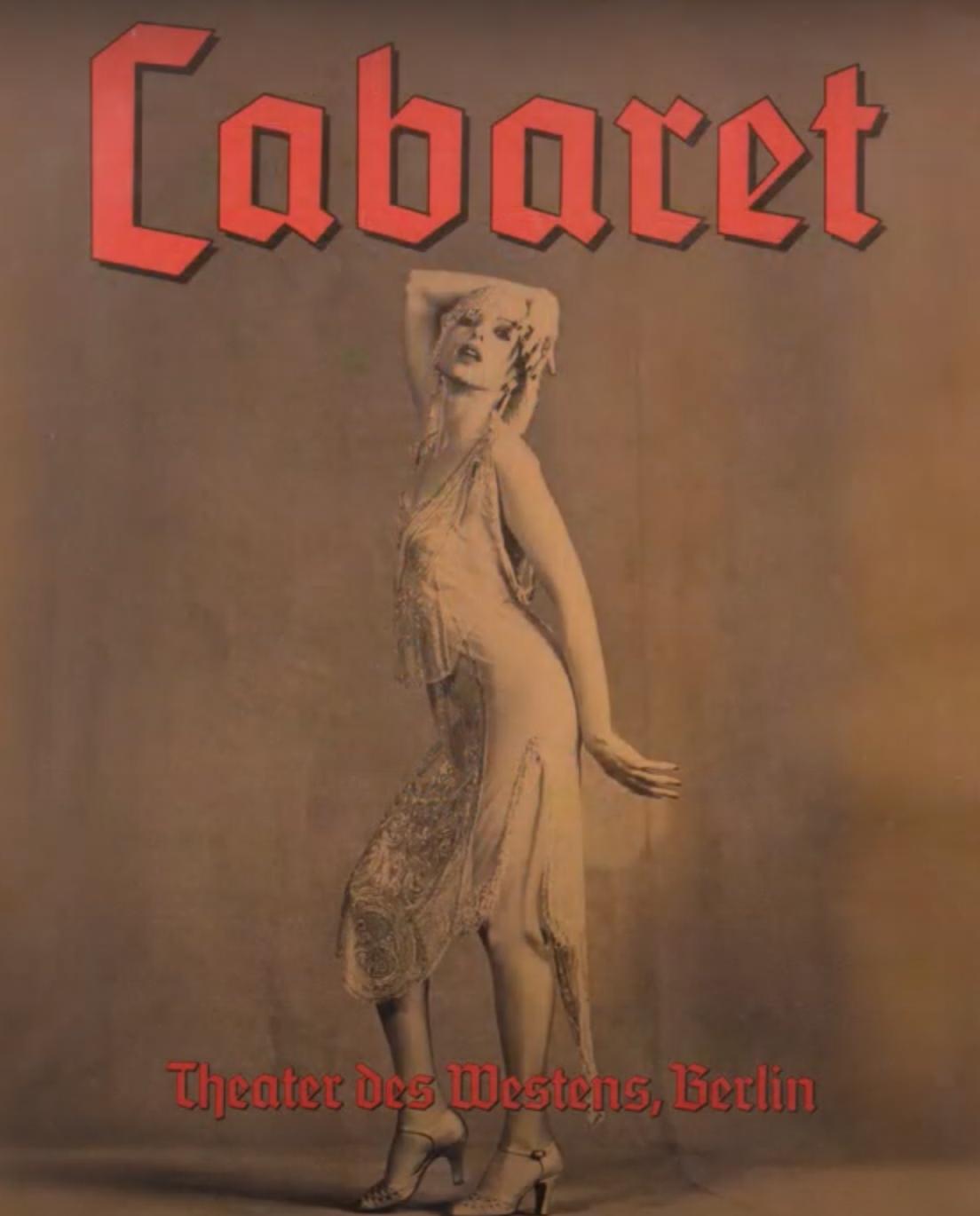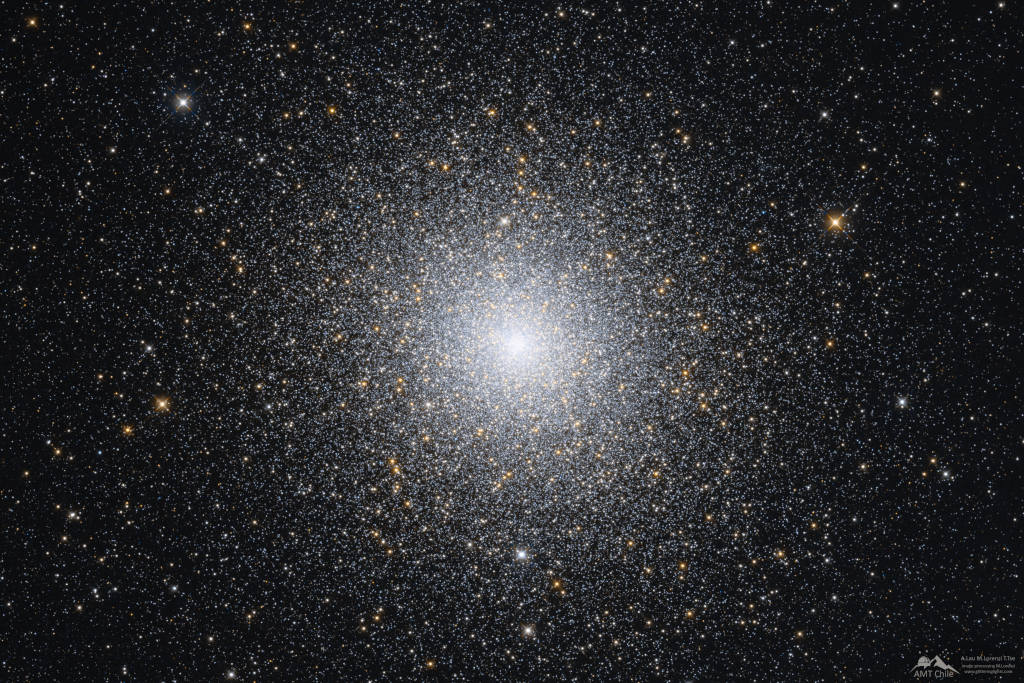Blog
The final two shows today Saturday 2-10-24 2pm matinee & 7pm. At the Mixed Blood Theater by Theatre 55. Music with Shirley Mier, Lyra Olson, Jeff Ruhnke, Brian Handeland, Bebe Keith and mick laBriola!

NGC 1365, also known as the Great Barred Spiral Galaxy, is a double-barred spiral galaxy about 75 million light-years away in the constellation Fornax.
NGC 1365 is a large barred spiral galaxy in the Fornax cluster. Within the larger long bar stretching across the center of the galaxy appears to be a smaller bar that comprises the core, with an apparent size of about 50″ × 40″. This second bar is more prominent in infrared images of the central region of the galaxy, and likely arises from a combination of dynamical instabilities of stellar orbits in the region, along with gravity, density waves, and the overall rotation of the disc. The inner bar structure likely rotates as a whole more rapidly than the larger long bar, creating the diagonal shape seen in images.

Rufus Reid (born February 10, 1944, in Atlanta, Georgia) is an American jazz bassist, educator, and composer.
Reid was raised in Sacramento, California, where he played the trumpet through junior high and high school. Upon graduation from Sacramento High School, he entered the United States Air Force as a trumpet player. During that period he began to be seriously interested in the bass.
After fulfilling his duties in the military, Rufus had decided he wanted to pursue a career as a professional bassist. He moved to Seattle, Washington, where he began serious study with James Harnett of the Seattle Symphony. He continued his education at Northwestern University in Evanston, Illinois, where he studied with Warren Benfield and principal bassist, Joseph Guastefeste, both of the Chicago Symphony. He graduated in 1971 with a Bachelor of Music Degree as a Performance Major on the Double Bass.
Rufus Reid’s major professional career began in Chicago and continues since 1976 in New York City. Playing with hundreds of the world’s greatest musicians, he is famously the bassist that saxophonist Dexter Gordon chose when he returned to the states from his decade-long exile in Denmark. His colleagues include Thad Jones, Nancy Wilson, Eddie Harris, and Bob Berg.
more...Emmanuel N’Djoké “Manu” Dibango (12 December 1933 – 24 March 2020) was a Cameroonian musician and songwriter who played saxophone and vibraphone. He developed a musical style fusing jazz, funk, and traditional Cameroonian music. His father was a member of the Yabassi ethnic group, while his mother was a Duala. He was best known for his 1972 single “Soul Makossa“.The song has been referred to as the most sampled African song in addition Dibango, himself, as the most sampled African musician in history. He died from COVID-19 on 24 March 2020.
more...William Henry “Chick” Webb (February 10, 1905 – June 16, 1939) was an American jazz and swing music drummer and band leader.
Webb was born in Baltimore, Maryland, to William H. and Marie Webb. The year of his birth is disputed. The Encyclopædia Britannica and Allmusic indicate 1905, and this seems to be supported by censusinformation. Other publications claim other years. During Webb’s lifetime, a December 1937 DownBeatmagazine article, “The Rise of a Crippled Genius”, stated he was born in 1909, which is the year that appears on his grave marker. In 1939, The New York Times stated that Webb was born in 1907, the year also suggested in Rhythm on Record by Hilton Schleman.
Webb was one of four children; the other three were sisters (Bessie, Mabel, and Ethel). His sister Mabel married Wilbur Porter around 1928. When an infant, Webb fell down some stairsteps in his family’s home, crushing several vertebrae and requiring surgery, from which he never regained full mobility. The injury progressed to tuberculosis of the spine, leaving him with short stature and a badly deformed spine which caused him to appear hunchbacked. The idea of playing an instrument was suggested by his doctor to “loosen up” his bones. He supported himself as a newspaper boy to save enough money to buy drums, and first played professionally at age 11.
more...
https://www.youtube.com/watch?v=5b0sV3NTZRM&list=PLEB3LPVcGcWY64uqsbXgmqroGvfDENO0l&index=4&t=45s
more...The 5th installment of Cabaret at the Mixed Blood Theater by Theatre 55. Music with Shirley Mier, Lyra Olson, Jeff Ruhnke, Brian Handeland, Bebe Keith and mick laBriola!

The beautiful Rosette Nebula and other star forming regions are often shown in astronomical images with a predominately red hue, in part because the dominant emission in the nebula is from hydrogen atoms. Hydrogen’s strongest optical emission line, known as H-alpha, is in the red region of the spectrum. But the beauty of an emission nebula need not be appreciated in red light alone. Other atoms in the nebula are also excited by energetic starlight and produce narrow emission lines as well. In this close-up view of the Rosette Nebula, narrowband images are mapped into broadband colors to show emission from Sulfur atoms in red, Hydrogen in green, and Oxygen in blue. In fact, the scheme of mapping these narrow atomic emission lines (SHO) into the broader colors (RGB) is adopted in many Hubble images of emission nebulae. This image spans about 50 light-years across the center of the Rosette Nebula. The nebula lies some 3,000 light-years away in the constellation Monoceros.

more...
Carole King Klein (born Carol Joan Klein; February 9, 1942 NY,NY) is an American singer-songwriter and musician who has been active since 1958. One of the most successful female songwriters of the latter half of the 20th century in the US, she wrote or co-wrote 118 pop hits on the Billboard Hot 100. She also wrote 61 hits that charted in the UK, making her the most successful female songwriter on the UK singles charts between 1962 and 2005.
King’s major success began in the 1960s when she and her first husband, Gerry Goffin, wrote more than two dozen chart hits, many of which have become standards, for numerous artists. She has continued writing for other artists since then. King’s success as a performer in her own right did not come until the 1970s, when she sang her own songs, accompanying herself on the piano, in a series of albums and concerts. After experiencing commercial disappointment with her debut album Writer, King scored her breakthrough with the album Tapestry, which topped the U.S. album chart for 15 weeks in 1971 and remained on the charts for more than six years.
King has made 25 solo albums, the most successful being Tapestry, which held the record for most weeks at No. 1 by a female artist for more than 20 years. Her record sales were estimated at more than 75 million copies worldwide. She has won four Grammy Awards and was inducted into the Songwriters Hall of Fame. She has been inducted twice into the Rock and Roll Hall of Fame, as a performer and songwriter. She is the recipient of the 2013 Library of Congress Gershwin Prize for Popular Song, the first woman to be so honored. She is also a 2015 Kennedy Center Honoree.
more...Ernest Dale Tubb (February 9, 1914 – September 6, 1984), nicknamed the Texas Troubadour, was an American singer and songwriter and one of the pioneers of country music. His biggest career hit song, “Walking the Floor Over You” (1941), marked the rise of the honky tonk style of music.
In 1948, he was the first singer to record a hit version of Billy Hayes and Jay W. Johnson’s “Blue Christmas“, a song more commonly associated with Elvis Presley and his late-1950s version. Another well-known Tubb hit was “Waltz Across Texas” (1965) (written by his nephew Quanah Talmadge Tubb, known professionally as Billy Talmadge), which became one of his most requested songs and is often used in dance halls throughout Texas during waltz lessons. Tubb recorded duets with the then up-and-coming Loretta Lynn in the early 1960s, including their hit “Sweet Thang”. Tubb is a member of the Country Music Hall of Fame.
more...Walter Sylvester Page (February 9, 1900 – December 20, 1957) was an American jazz multi-instrumentalist and bandleader, best known for his groundbreaking work as a double bass player with Walter Page’s Blue Devils and the Count Basie Orchestra.
Page was born in Gallatin, Missouri, on February 9, 1900, to parents Edward and Blanche Page. Page showed a love for music even as a child, perhaps due in part to the influence of his aunt Lillie, a music teacher. Page’s mother, with whom he moved to Kansas City in 1910, exposed him to folksongs and spirituals, a critical foundation for developing his love of music. He gained his first musical experience as a bass drum and bass horn player in the brass bands of his neighborhood. Under the direction of Major N. Clark Smith, a retired military bandleader who provided Page his first formal training in music, Page took up the string bass in his time at Lincoln High School.
more...Maria do Carmo Miranda da Cunha GCIH, OMC (9 February 1909 – 5 August 1955), known professionally as Carmen Miranda, was a Portuguese-born Brazilian singer, dancer and actress. Nicknamed “The Brazilian Bombshell”, she was known for her signature fruit hat outfit that she wore in her American films. As a young woman, she designed hats in a boutique before making her first recordings with composer Josué de Barros in 1929. Miranda’s 1930 recording of “Taí (Pra Você Gostar de Mim)”, written by Joubert de Carvalho, catapulted her to stardom in Brazil as the foremost interpreter of samba.
During the 1930s, Miranda performed on Brazilian radio and appeared in five Brazilian chanchadas, films celebrating Brazilian music, dance and the country’s carnival culture. Hello, Hello Brazil! and Hello, Hello, Carnival! embodied the spirit of these early Miranda films. The 1939 musical Banana da Terra (directed by Ruy Costa) gave the world her “Baiana” image, inspired by Afro-Brazilians from the north-eastern state of Bahia.
more...Because of the unique relationship between Tarantas and Tarantos, You’ll want to be clear about the difference between Tarantas and Tarantos before diving in to one course or the other. Taranta is Libre, which means that there is no compás underlying the structure. Taranta is sung and played as a guitar solo, but is not danced. Tarantos have almost everything in common with Tarantas, but are in 4/4 time, with a compás very much like that of Tientos, and can be sung and played and also danced (thanks to the great Carmen Amaya!).
Thursday February 8th 2024 7pm. Cabaret by Theatre 55 at the Mixed Blood Theater on the West Bank. Music with Shirley Mier, Lyra Olson, Jeff Ruhnke, Brian Handeland, Bebe Keith and mick laBriola!

Globular star cluster 47 Tucanae is a jewel of the southern sky. Also known as NGC 104, it roams the halo of our Milky Way Galaxy along with some 200 other globular star clusters. The second brightest globular cluster (after Omega Centauri) as seen from planet Earth, 47 Tuc lies about 13,000 light-years away. It can be spotted with the naked-eye close on the sky to the Small Magellanic Cloud in the constellation of the Toucan. The dense cluster is made up of hundreds of thousands of stars in a volume only about 120 light-years across. Red giant stars on the outskirts of the cluster are easy to pick out as yellowish stars in this sharp telescopic portrait. Tightly packed globular cluster 47 Tuc is also home to a star with the closest known orbit around a black hole.

more...
Floyd Dixon (February 8, 1929 – July 26, 2006) was an American rhythm-and-blues pianist and singer.
Dixon was born in Marshall, Texas. Some sources give his birth name as Jay Riggins Jr., although Dixon himself stated that Floyd Dixon was his real name and that his parents were Velma and Ford Dixon. Growing up, he was influenced by blues, gospel, jazz and country music. His family moved to Los Angeles, California, in 1942. There Dixon met Charles Brown, who had an influence on his music.
The self-dubbed “Mr. Magnificent”, Dixon signed a recording contract with Modern Records in 1949, specializing in jump blues and sexualized songs like “Red Cherries”, “Wine Wine Wine”, “Too Much Jelly Roll” and “Baby Let’s Go Down to the Woods”. Both “Dallas Blues” and “Mississippi Blues”, credited to the Floyd Dixon Trio, reached the Billboard R&B chart in 1949, as did “Sad Journey Blues”, issued by Peacock Records in 1950.
more...More Posts
- Johann Sebastian Bach
- World Music Taraf de Caliu
- Daily Roots Revolutionaries
- Cosmos NGC 4372
- Norah Jones
- Tracy Chapman
- Sonny Boy Williamson
- Eric Clapton
- SAVE UKRAINE World Music Joryj Kłoc
- Daily Roots Cultural Roots
- Cosmos Sh2-308
- Michael Brecker
- Vangelis
- Astrud Gilberto
- World Music Danûk
- Daily Roots Augustus Pablo
- Cosmos Aurora Arctic
- Tete Montoliu
- Thad Jones
- World Music Roopa Panesar
